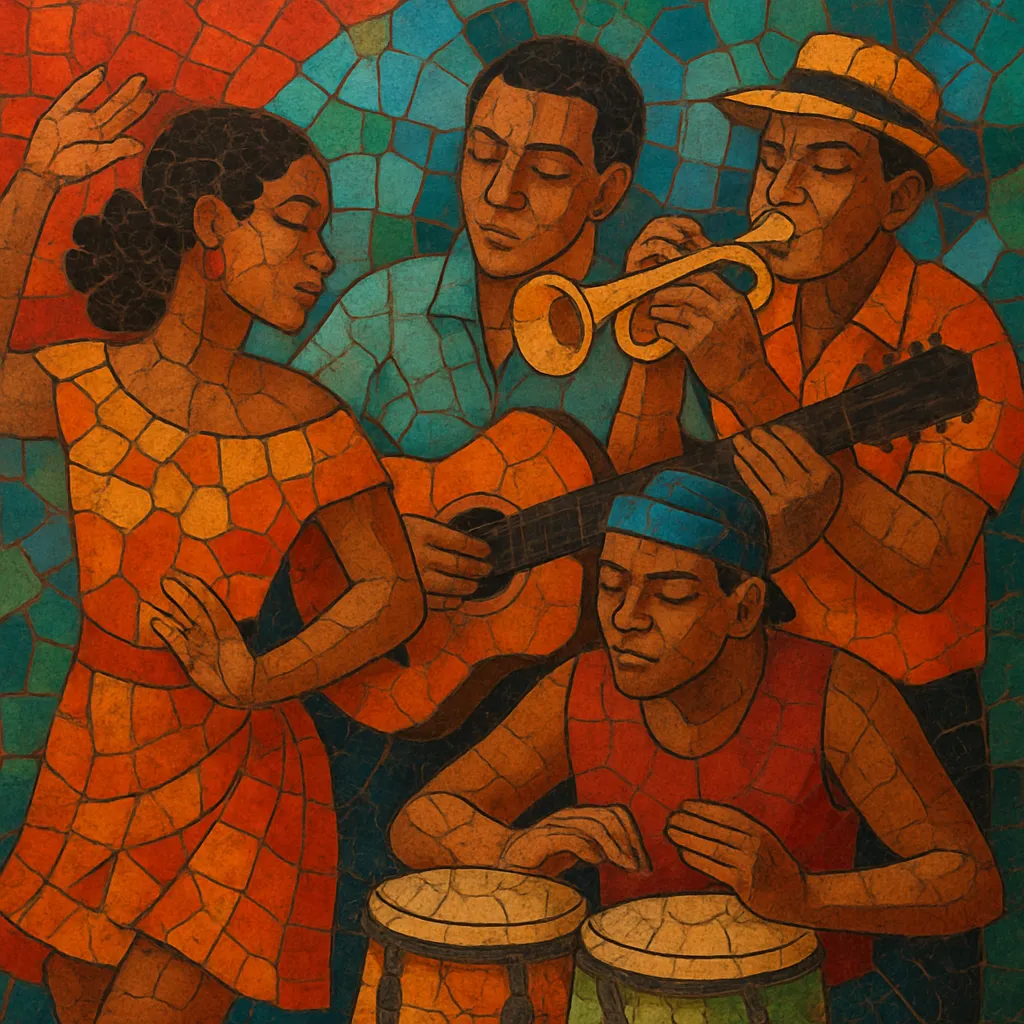Cadence-lypso is a dance music genre that emerged in Dominica in the early to mid-1970s. It fuses the smooth, steady groove of Haitian compas (cadence rampa) with the witty lyricism and topical flair of Trinidadian calypso, while embracing funk/disco-era instrumentation such as electric bass, drum kit, horns, and synthesizers.
Characterized by a tight, syncopated rhythm section, catchy horn lines, prominent keyboards, and chantable choruses, cadence-lypso is performed in English and Antillean Creole (Kwéyòl). Pioneered by bands like Exile One and Grammacks, it became a regional dance craze and a key stepping-stone toward the creation of zouk in the French Antilles.
Cadence-lypso arose in Dominica as musicians blended Haitian cadence/compas’ steady, guitar-and-cowbell-driven groove with calypso’s storytelling and social commentary. The new hybrid capitalized on modern electric instrumentation and the burgeoning influence of funk and disco, yielding a sleek, dance-floor-ready sound.
Exile One, led by Gordon Henderson, and Grammacks, fronted by Jeff Joseph, crystallized the style with polished studio productions and international touring. Dominican acts such as Midnight Groovers and the Swingin’ Stars further anchored the sound locally, while singers like Ophelia Marie brought a charismatic vocal presence and Creole lyricism that resonated across the region.
By the late 1970s and early 1980s, cadence-lypso spread to Guadeloupe and Martinique, where its modernized compas feel and synthesizer-driven arrangements inspired a new generation of Caribbean bands. Its rhythmic blueprint, horn voicings, and keyboard-centric textures directly informed the formation of zouk.
Although later styles (notably zouk and, in Dominica, bouyon) would take center stage, cadence-lypso remains a foundational Caribbean dance genre. Its emphasis on groove, tight arrangements, and bilingual lyricism continues to influence live band culture and the broader Caribbean soundscape.


